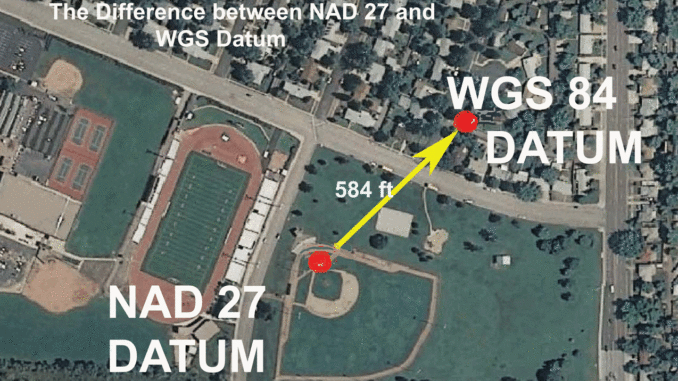
Use the correct one, or miss your mark
Dear Capt. Paul:
We recently conducted a navigation demonstration using a Rockwell PLGR II (military grade).
The navigation course consisted of 34 known civil surveyed points. Using the data that was provided and analyzing our data, we concluded that after proper conversions (the same software they used), we were 2 to 38 feet off east to west and 600 feet off to the north for most of the positions. Why the variation and can you explain the 600 feet?
Sammy,
Colorado Springs, CO
Capt. Paul’s response:
The Rockwell/Collins GPS unit PLGR II is one of a series of GPS units offered for military use. There are several PLGR units available, so I am not sure that the unit you are using as a demo has the ability to receive the civilian (code C/A) or only the military versions (Code P or P+AS encrypted) of GPS transmissions. The baseline unit was made from 1993 to 2005, and has the ability to receive the restricted military signals. Military-version GPS units generally offer a more stable and accurate position locator, usually assumed to be under 6 feet of accuracy with the code “P” and much less with the P+AS version. The actual accuracy is classified.
Newer civilian units usually can obtain an accuracy of under 9 feet with the added WAAS differential system incorporated into the receiver. My Garmin GPS 62 MAP with the WAAS activated consistently delivers a 9-foot or less accuracy reading.
With either version of the transmitting GPS signals, I would assume that the unit was operating properly and should be capable of providing an accurate position. This will lead me to assume that the 600 foot error is caused by another factor.
I am not sure what “conversions” you made to obtain your readings. I suspect that the conversions you are describing are converting MRGS or UTM/UPS to latitude and longitude or the reverse. I will assume that your “conversions” are correct, but by your description of the error factors, it sounds like the position readings of the GPS receiver and the known civilian survey markers were plotted or fixed using different horizontal datum.
Locate the map on which the surveyed points are marked and the details in the civilian plotted positions. Note the datum that was used to plot the location (horizontal datum). I believe that the most if not all USGS topographical maps in the Colorado area were configured using North American datum of 27 (NAD 27). Some Colorado topo maps were updated in 1981 using the more modern NAD 83 datum. If the surveyed points are older than 1983, they were probably surveyed using the NAD 27 datum. The United States National Geodetic Survey (www.ngs.noaa.gov/cgi-bin/datasheet.prl) has a listing of all benchmark positions in their files of official survey data sheets. Each data sheet has a very precise plotted position of the survey marker and lists the datum that was used to plot the position. Check out the “Civil Surveyed” points to see if they are in fact a USGS-plotted benchmark. If so, then you can simply check the datum in your GPS unit to see if that was the figure you obtained when at that benchmark.
The PLGR unit has the ability to use 50 preset datum and two user-defined datum. As a suggestion, check the datum in the setup program or datum screen page of the GPS unit. If it is set to a different datum than the civil mapped positions, change it to match the civil datum.
By that, I mean convert the surveyed point to an available datum in the GPS unit by using the U.S. Army Corps of Engineers conversion program that it available for downloading at crunch.tec.army.mil/software/corpscon/corpscon.html.
The site allows a conversion of a variety of datum and position formats. It is worth the look and even saving it in your computer for future use.
If the unit cannot be reprogrammed to the same datum as the civilian surveyed point, convert the civilian surveyed point to a available datum in the GPS unit. Either way the position format figures must agree in a common datum for the values on the map and in the GPS unit to be the same. In the conversion, try NAD 27 CONUS (North American datum 1927, Continental U.S.)
Unless otherwise specified, all positions are stated as degrees, minutes and ten thousandths of minutes (DDD,MM.mmmm), and were determined using WGS 84 datum. All bearings and courses are stated in magnetic degrees.
Captain Paul


